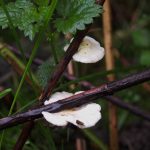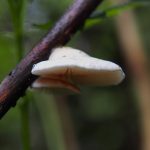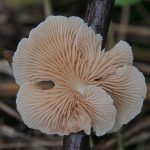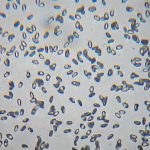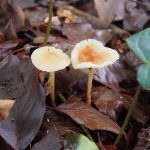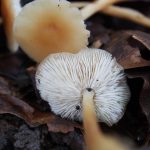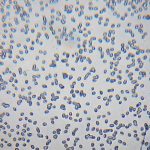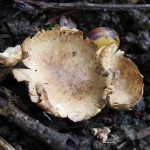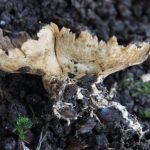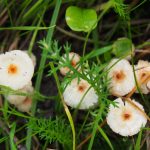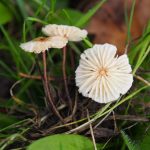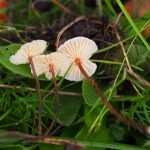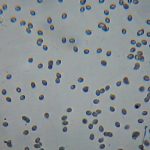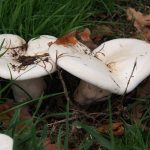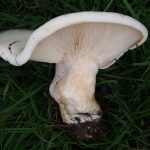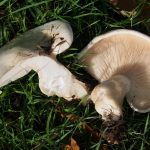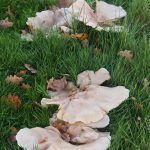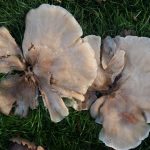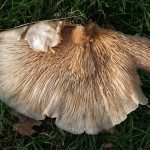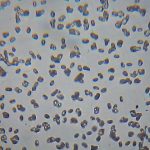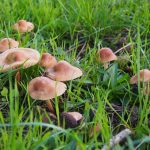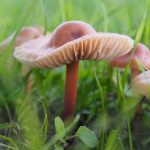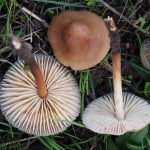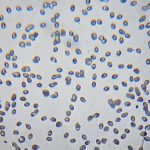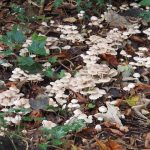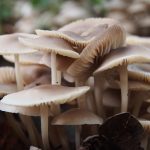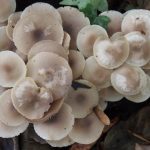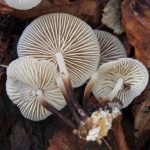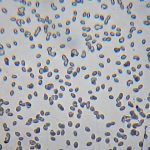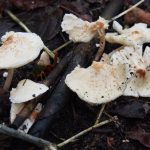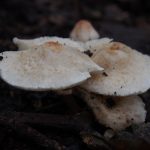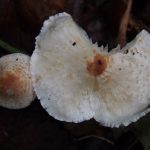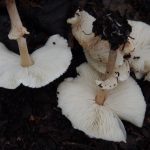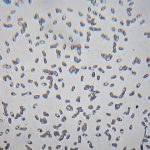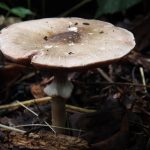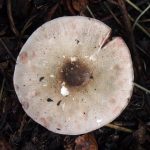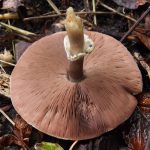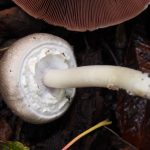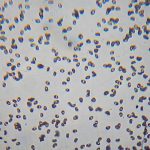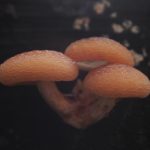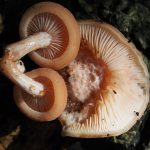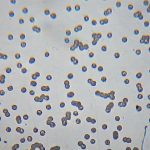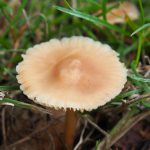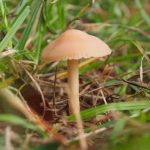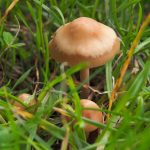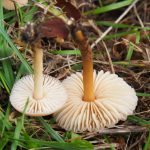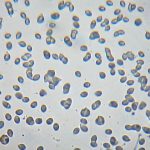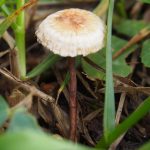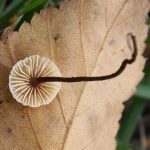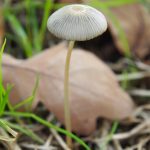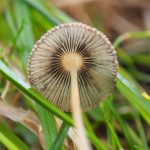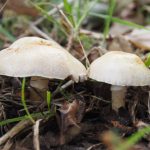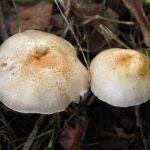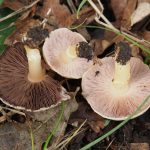1. Unidentified.
-
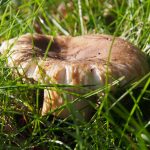
- 1. Unidentified
-
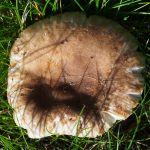
- 1. Unidentified
-
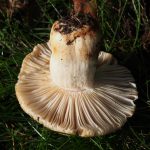
- 1. Unidentified
-
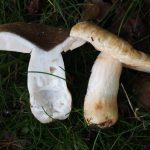
- 1. Unidentified
-
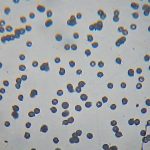
- 1. Unidentified
Growing in grass around oak tree. Several scattered around. Cap 7cm. Cloying rich slightly unpleasant smell. Taste mild, no heat. Cap hardly peeling, less than 1/4. Sporeprint White. Spores 7-8µ x 6-7µ.
2. Unidentified.
-
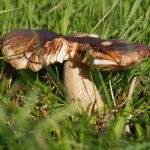
- 2. Unidentified
-
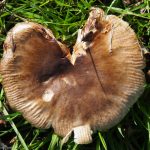
- 2. Unidentified
-
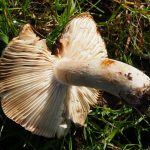
- 2. Unidentified
-
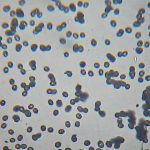
- 2. Unidentified
Growing in grass around oak tree. Several scattered around. Cap 6-9cm. Cut flesh smells of cheese, older one smells fishy. Taste becoming slowly hot. Sporeprint White. Spores 6.5-7.5µ x 5-6.5µ.
3.
Oakbug Milkcap (
Lactarius quietus).
-
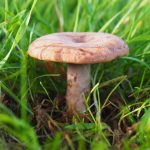
- 3. Oakbug Milkcap
-
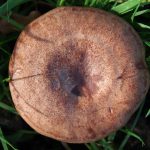
- 3. Oakbug Milkcap
-
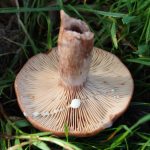
- 3. Oakbug Milkcap
-
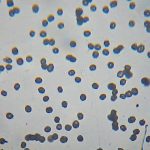
- 3. Oakbug Milkcap
In grass near oak tree. One. Cap 5cm, stem 4cm. Buggy smell. Milk tastes mild, no heat. Sporeprint White. Spores 7-8.5µ x 5.5-7.5µ.
4.
Sepia Brittlegill (
Russula sororia).
-
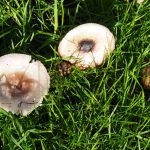
- 4. Sepia Brittlegill
-
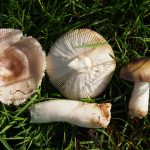
- 4. Sepia Brittlegill
-
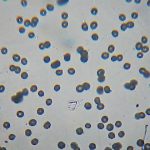
- 4. Sepia Brittlegill
Growing in grass under oak tree. Two or three scattered. Cap 5-6cm, stem up to 6cm. Strong cheesy smell. Taste slowly becomes hottish. Cap peels nearly to centre. There are a couple of Russulas that smell of cheese and this id seems most likely. ID is fairly likely. Sporeprint White. Spores 7.5-9µ x 6.5-8µ.
5. Unidentified.
-
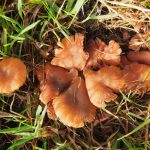
- 5. Unidentified
-
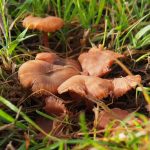
- 5. Unidentified
-
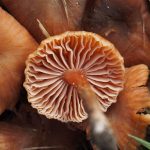
- 5. Unidentified
-
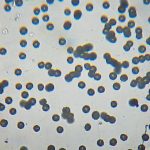
- 5. Unidentified
Growing in grassy field. Cluster of several and also scattered singly around. Cap 2.5-4.5cm. Sweet smell. Sporeprint White. Spores 7.5-9µ x 7-8.5µ.
6.
The Prince (
Agaricus augustus).
-
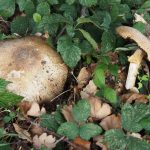
- 6. The Prince
-
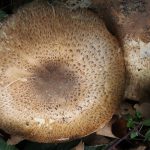
- 6. The Prince
-
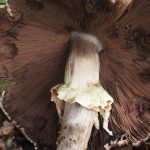
- 6. The Prince
-
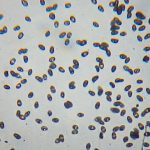
- 6. The Prince
Growing under oak in park. Two. Cap 13-18cm, stem 10-17cm. Pleasant strong mushroom smell. Lovely mushroom/aniseed taste. ID is almost sure. Sporeprint Chocolate brown. Spores 6.5-8.5µ x 4-5µ.
7.
Wood Blewit (
Lepista nuda).
-
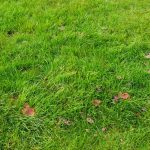
- 7. Wood Blewit
-
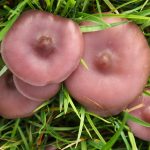
- 7. Wood Blewit
-
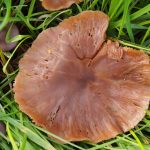
- 7. Wood Blewit
-
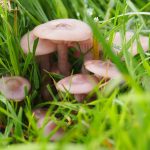
- 7. Wood Blewit
-
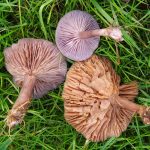
- 7. Wood Blewit
-
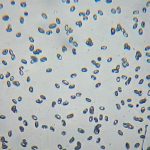
- 7. Wood Blewit
Growing in grass in park short distance from small deciduous tree. Ring made up of clusters and singles. Cap 2-7cm, stem up to 5cm. Sweet pleasant smell, slightly perfumed. Grass colour darker inside the ring. These look and smell exactly like Wood Blewit, the spores look exactly like Wood Blewit spores, and Wood Blewit is known to grown in rings. So, despite them growing in grass rather than woodland, I think they must be Wood Blewits. ID is fairly likely. Sporeprint Very pale pink. Spores 5.5-7.5µ x 3-4.5µ.
8. Unidentified.
-
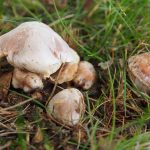
- 8. Unidentified
-
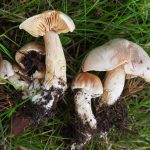
- 8. Unidentified
-
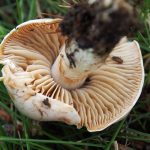
- 8. Unidentified
-
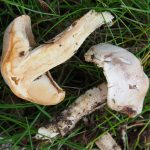
- 8. Unidentified
-
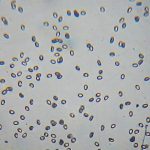
- 8. Unidentified
Growing under sweet chestnut in debris and grass. A few small clusters. Cap 1.5-5cm, stem 3cm. Sweet somewhat sickly smell. Covered in white veil. I think these may be a type of Webcap (Cortinarius) due to the veil and because several have a sweet or fruity smell. However there are very many similar species so hard to identify. Sporeprint Reddish or pink. Spores 5-6.5µ x 3.5-5µ.
9.
Ivory Bonnet (
Mycena flavoalba).
-
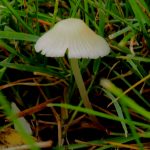
- 9. Ivory Bonnet
-
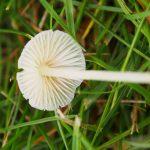
- 9. Ivory Bonnet
-
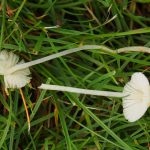
- 9. Ivory Bonnet
-
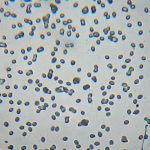
- 9. Ivory Bonnet
Growing in grass in park. Many scattered in groups and singly. Cap 1-1.5cm, stem up to 4cm. Indistinct smell. Sporeprint White. Spores 4.5-6.5µ x 4-5µ.
10.
Lilac Pinkgill (
Entoloma porphyrophaeum).
-
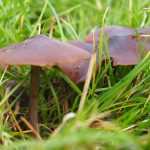
- 10. Lilac Pinkgill
-
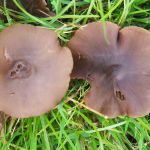
- 10. Lilac Pinkgill
-
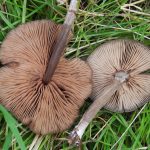
- 10. Lilac Pinkgill
-
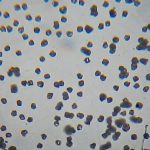
- 10. Lilac Pinkgill
Growing in grass in park. Several scattered around. Cap 4-6cm, stem up to 6cm. No smell. There are many similar looking Entoloma species but the particular combination of grass habitat, relatively small spores and lack of unpleasant smell make this tricky to identify. ID is guess. Sporeprint Pink. Spores 6-8µ x 5.5-7.5µ.
11.
Parrot Waxcap (
Hygrocybe psittacina).
-
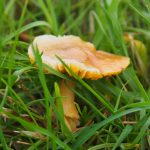
- 11. Parrot Waxcap
-
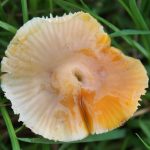
- 11. Parrot Waxcap
-

- 11. Parrot Waxcap
-
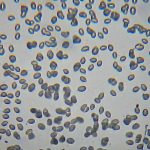
- 11. Parrot Waxcap
Growing in grass in park. One. Cap 3cm, stem 3.5cm. No smell. Sporeprint White. Spores 7-9.5µ x 4.5-6.5µ.
12.
Brown Birch Bolete (
Leccinum scabrum).
-
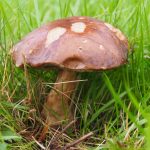
- 12. Brown Birch Bolete
-
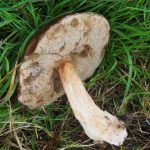
- 12. Brown Birch Bolete
-
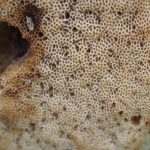
- 12. Brown Birch Bolete
-
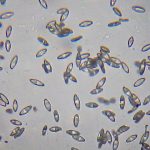
- 12. Brown Birch Bolete
Growing through grass near birch tree. Group of three. Cap 9-14cm. Mild smell. Stems of this species usually have tiny black spots but it seems that these can sometimes be absent. Sporeprint Brown. Spores 12.5-18µ x 5-6.5µ.




















































